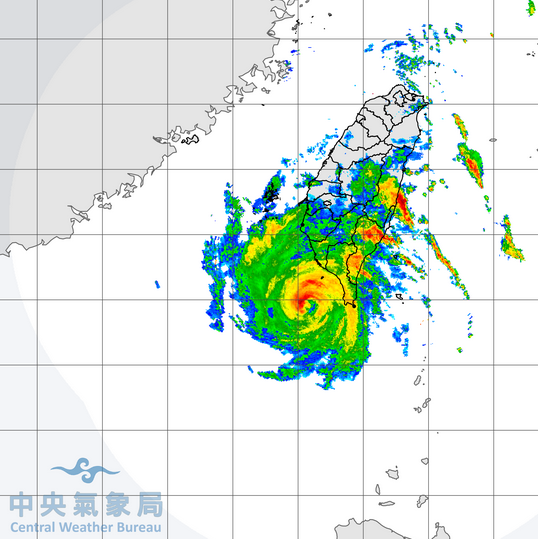Tropical Storm Lupit formed southeast of Hong Kong on Tuesday night. At 11:00 p.m. EDT on Tuesday the center of Tropical Storm Lupit was located at latitude 21.5°N and longitude 115.9°E which put it about 115 miles (185 km) southeast of Hong Kong. Lupit was moving toward the east-northeast at 9 m.p.h. (15 km/h). The maximum sustained wind speed was 40 m.p.h. (65 km/h) and there were wind gusts to 50 m.p.h. (80 km/h). The minimum surface pressure was 994 mb.
The circulation around a low pressure system southeast of Hong Kong exhibited more organization on Tuesday night and the Japan Meteorological Agency designated the system as Tropical Storm Lupit. Winds to tropical storm force extended out 35 miles (55 km) from the center of Lupit. The distribution of thunderstorms around Tropical Storm Lupit was asymmetrical. Most of the thunderstorms were occurring in bands in the southern half of Lupit. Bands on the northern side of the circulation consisted primarily of showers and lower clouds. Tropical Storm Lupit was under the southern part of an upper level ridge over eastern China. The ridge was producing northeasterly winds that were blowing toward the top of Lupit’s circulation. Those winds were causing moderate vertical wind shear and they were the reason for the asymmetrical distribution of thunderstorms.
Tropical Storm Lupit will move through an environment somewhat favorable for intensification during the next 24 hours. Lupit will move over water where the Sea Surface Temperatures are near 29°C. The upper level ridge over eastern China will continue to cause moderate vertical wind shear which will inhibit intensification. The wind shear may not be strong enough to prevent intensification and Tropical Storm Lupit could strengthen during the next 24 hours.
Tropical Storm Lupit will move around the western end of a high pressure system over the Western North Pacific Ocean. The high will steer Lupit toward the northeast during the next 24 hours. On its anticipated track Tropical Storm Lupit could be over the southern Taiwan Strait southeast of Shantou, China in 24 hours. Lupit could produce gusty winds and locally heavy rain over portions of the coast of Eastern China.
Elsewhere over the Western North Pacific Ocean, a tropical depression formed east of Taiwan. At 11:00 p.m. EDT on Tuesday the center of the tropical depression was located at latitude 24.0°N and longitude 125.9°E which put it about 190 miles (305 km) southwest of Okinawa. The tropical depression was moving toward the east-northeast at 4 m.p.h. (6 km/h). The maximum sustained wind speed was 35 m.p.h. (55 km/h) and there were wind gusts to 45 m.p.h. (75 km/h). The minimum surface pressure was 998 mb. The depression is forecast to move toward the northeast and to strengthen. It could bring gusty winds and locally heavy rain to some of the Ryukyu Islands.

